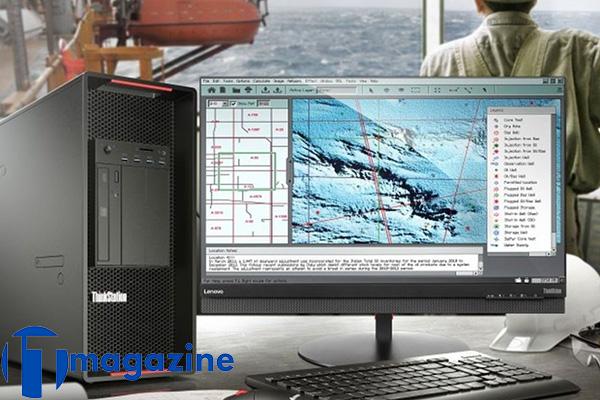Since PC and Workstation are similar in appearance, they are usually considered the same. But what is certain is that these two are different and designed for different users. Next, we will examine the difference between a desktop computer and a workstation.
Workstation and PC hardware comparison
Workstations generally use higher-end hardware, and for this reason, you may come across the term “class workstation”. For example, more professional graphics cards or motherboards are used in workstations. The most important difference between PC and Workstation is Nvidia Quadro and Geforce graphics cards, which means NVIDIA Quadro is usually used in workstations. It is also possible to use NVIDIA Tesla GPU in the workstation. Next, we will examine the hardware advantages of workstations.
Check out the benefits of Workstation hardware
There are some workstation features that are naturally present in workstations, such as ECC RAMs, multi-processors, or specific inputs and outputs. All these parts and components in Workstation ensure the proper functioning of the system.
RAM: Low-end workstations have almost twice as much memory as PCs, or with the same capacity, smaller and cheaper DIMMs can be provided for them. On the other hand, it helps the designers to detect disorders and defects earlier, and the cost and time to fix them is less.
These ECC RAMs fix memory errors before they affect the system, thereby preventing crashes and downtime. It means that 99.9998 percent of memory errors can be detected and corrected. This important and main feature is relevant for those who work with large and complex projects. The higher the capacity of RAM, the higher the possibility of error in RAM.
Multi-core processors: The more CPU cores, the more processing power we have. Of course, this does not mean that the performance will be maximized because the type of software you use is very influential. But it has many benefits.
Processing power is very important in processing-based applications, and workstations handle it well. Workstations, unlike PCs, support more than one CPU, which provides more processing power. The response speed is higher in more demanding applications such as CAD, animation and digital content production, and it is possible to run several applications at the same time without reducing efficiency. In this way, designers and researchers and scientists have access to information more quickly.
RAID technology: When we use RAID, we have several hard drives that are used to store and process information. If you use RAID, depending on the type of system, you can use several drives for data processing or mirror the drives. What is the result? If one hard drive fails, the other drives will continue to work.
Hard drives: High-capacity hard drives are important for heavy work, and workstations are designed to support even several terabytes of internal storage capacity, as a result, all jobs of any size are stored on the system. There is support for SSDs in workstations.
SSD drives are different from regular hard drives. Because they don’t have moving parts, they don’t have any physical problems. They also have more speed and reliability. On the other hand, they have a higher price and are more expensive and usually have less storage capacity. SSD consumes less power.
Optimized graphics card: The output of all computers should be displayable. The use of advanced and high-level GPUs means that you do not need to process the output of the page. As a result, the processing load on the CPU will be reduced and the speed and efficiency will increase, but the price will also increase. Workstations are designed to support one or more professional graphics cards, but PCs usually support a single card.
Price comparison
Due to the use of high-level hardware, workstations are more expensive than ordinary home and office computers.

Comparison in terms of efficiency
Depending on the configuration of the systems, any functionality that desktop systems provide you, Workstation offers several times it. This routine will be significant in workloads such as rendering time, animation, modeling, simulation and machine learning.
Comparison in terms of lifespan
Many components in the Workstation class make the standard of parts and the lifespan of the system higher, for example, the capacitors used in the workstation are of better quality compared to ordinary PCs. Considering the use of workstations, they should be able to work without errors and breakdowns for a long time and be suitable for High Demand uses.
Is workstation or a PC better?
Ideally, a system that has a reasonable price and meets all our needs is a suitable system. If you buy a system with more power than you need, you are paying more than you should. If you don’t choose a system with enough power, you limit productivity and production, creativity and employee and user satisfaction.
The best choice depends on the application and the type of applications you use on your PC or workstation. If you usually have different types of projects such as video editing, 3D rendering, machine learning and CAD, then Workstation is the right choice for you. Workstation provides you with more power and more reliability along with higher accuracy, bringing you better results. Using workstation-class hardware, such as NVIDIA Quadro GPUs, will increase your speed.
If the video and CAD work you do is temporary and at a casual level, or you don’t play games professionally (professional gaming), a home computer is enough for you. The current generations of Intel and AMD processors and NVIDIA GeForce GPUs have high power and great variety, and provide high value for their customers.
Normal office tasks can be done with standard office applications, such as working with Word, email, web surfing, etc., which do not require special performance, and standard PCs are used. But engineers, designers, economic analysts and researchers need more demanding applications such as complex graphics rendering, digital content production, economic analysis, and processing and calculations, need to use more professional systems and workstations. Of course, in the field of general and professional use, the purchase of low-end workstations provides new capabilities that increase productivity and reliability and reduce downtime, so it is a long-term investment.
It is clear that by spending more money, you will have more features. For example, if you want to buy a PC, you can buy a workstation by paying twice the price. But ask yourself this question: How much does downtime cost you? If you multiply the less time spent with better hardware by man-hours, you will see how much money you would have saved. which may be equal to the same cost as the purchase of a workstation. So buying suitable and high-performance hardware will benefit you in the long run. Also, your employees are happier because they have reliable equipment that is effective in increasing productivity.











Comment here